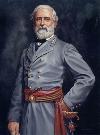Max 86
Posts: 699
Joined: 11/6/2007
Status: offline

|
I like some of their new ideas but will wait to see how it plays before purchase. From PC Gamer interview with designer team: http://www.pcgamer.com/civilization-6-everything-you-need-to-know/
Cities are made up of districts
In Civilization VI, each building type is part of a district, and each district exists as a separate tile. "You have a campus tile, and that's where all your research is going on – you have your library, university and research lab all in that campus tile." Similarly, there will be military tiles, industrial tiles and harbours. "There are 10 to 12 different types of tile that you'll put around your city," says Beach, "and the player now has this intricate layout puzzle, where they decide where districts go around their city. That becomes a cool, fun way to develop your empire that has a layer of depth that we didn't have before."
District placement is more than just an aesthetic choice. Some map tiles will convey bonuses to specific districts. Mountains are great for studying the skies, so offer bonuses to your science campus. Mountains are also an imposing spot for worship – providing a boost to your faith. "Every district has a good place to put it. You're trying to manage where those go with where all the resource tiles are. It becomes a fun layout puzzle of trying to maximise your bonuses."
District tiles also convey information. By looking at a city's districts you can easily tell what that city does. At a glance, you'll be able to see which of your cities is dedicated to which resource. The same holds true for rival civilizations. From the main map screen, you'll be able to easily identify the city that, if captured or destroyed, could cripple an enemy's production.
Research is more active
Unlike in previous Civilizations, research speed isn't based purely on your civilisation's science output. "Now there are things, for pretty much every technology in the game, that you can do out in the game world to push you in that direction," says Beach. "So if you want to push masonry or construction because you want to build walls, you better go out and establish a quarry. That's going to teach your citizens the skills they need to become good at masonry." Your empire learns by doing.
"If you want to develop a navy, in previous games of Civilization you could research all the technology for that without even having settled a city along the coast. Here you actually get a significant boost towards sailing when you put that city on the coast. You can get further boosts for other naval technologies by creating fishing boats and starting to harvest naval resources."
Some research boosts will be available based on the terrain around you – feeding into Firaxis's aim of incentivising specific strategies based on your starting location. "Players are going to have to think through: 'look at this start position, this is a great one for me to push on horseback riding and develop a very mobile military. I'm going to push this direction and go through that part of the tree this time.'"
AI leaders have an agenda
Firaxis wants diplomacy to feel more dynamic, and to force players to work out the political landscape on the fly. "Each AI leader has a historical agenda that's appropriate to their historical personality," says Beach. "We've chosen for each of them to have a play style that's unique but appropriate for their role in leading their country in history."
One leader might be fanatical about allying with city states. That forces you into a decision: back off from city states and potentially be friends, or compete over a state's affection and maybe come to blows. "You have to adjust to the different personalities that you meet and find out what makes them happy and what's going to anger them. That's going to vary from one leader to the next, and give each civilisation a very different feel."
Of course, these historical traits can be learned by the player and applied to future playthroughs. To combat that, Firaxis takes traits that aren't historically tied to leaders and secretly assigns them at the beginning of each game. "As you go through the game, you can discover what they are by spying on them or trying to learn more secrets about them. Once you've learn that about other leaders, you can fully unlock the diplomatic landscape."
I ask what is, to my mind, the most important question of all. If a leader's traits are historical, will Gandhi be less fond of nuclear armageddon? "We have a special way of handling him. Initially he's going to seem very peaceful, but he'll have a dark side."
Support units can be embedded into other units
Civilization VI isn't removing Civ 5's one unit per tile rule, but Firaxis is dialling back on some of the harsher restrictions. "One thing we wanted to do was make sure you could tie units together. In Civ 5, it was tough to escort your settlers across the map because you couldn't tie them to a military unit," says Beach. Additionally, Beach notes, armies were perhaps a little too spread out. "When you need to concentrate your force to take out a city, everything being on its own tile was a problem at that point."
Beach describes support units as, "something that was part of your military force before, that really shouldn't have had to take up a tile." As the name suggests, it's supporting equipment: battering rams, siege towers, anti-tank guns and anti-air guns. "All the stuff that's like special equipment for you units. In Civ 5 you had to have a separate tile, but we've gone away from that."
< Message edited by Max 86 -- 6/17/2016 3:52:56 PM >
_____________________________
No problem Chief!
|
 Printable Version
Printable Version















 New Messages
New Messages No New Messages
No New Messages Hot Topic w/ New Messages
Hot Topic w/ New Messages Hot Topic w/o New Messages
Hot Topic w/o New Messages Locked w/ New Messages
Locked w/ New Messages Locked w/o New Messages
Locked w/o New Messages Post New Thread
Post New Thread